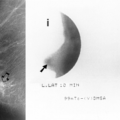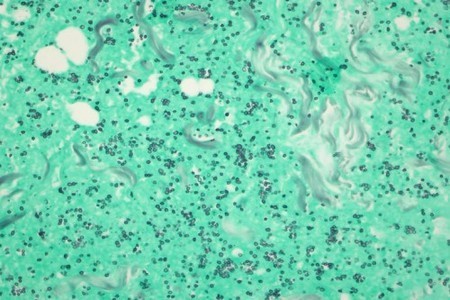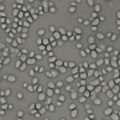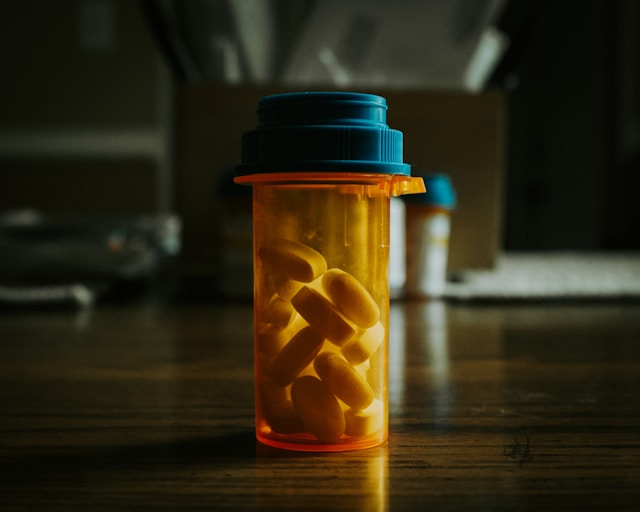Have you ever taken antibiotics and felt they had possibly both beneficial and detrimental effects on your health? There are plenty of scientific journals that debate just this (here, here). In the functional medicine world, we hear many stories from people about moderate to severe adverse reactions to fluoroquinolones and other antibiotics. This website has many such stories about the fluoroquinolone reactions and has published several articles on the mechanisms. One way fluoroquinolones wreak havoc on health that has not be discussed here is their role in oxalosis. There are several straightforward ways that antibiotics may increase oxalate, but I would like to share some new ideas about what changes they may make that might impact oxalate and inflammation.
What Are Fluoroquinolones?
Fluoroquinolones are a family of antibiotics that have a powerful bactericidal effect by inhibiting bacterial type II DNA topoisomerase. Due to their potent antibacterial effect, fluoroquinolones are most commonly used to assist with a wide variety of infectious conditions. This class of drug contains a black box warning from the FDA, indicating that it can cause serious issues like tendinitis, tendon rupture, peripheral neuropathy, myasthenia gravis and central nervous system effects. The negative effects of these drugs have become so widespread that a nickname has been coined for those who have endured fluoroquinolone injuries, called Floxies.
In our functional medicine circle we have heard many of their stories. In some instances, the original problem for which the antibiotic was prescribed becomes worse after treatment. In other cases, Floxies seem to experience major hormonal shifts with changes to their skin, collagen, hair, and connective tissues. In the worst cases, patients experience tendon ruptures, often of the Achilles, which is one of the more likely areas to be affected. Additionally, some patients develop sudden onset of allergic reactions to things in their environment or diet that they were not previously allergic too. Angioedema, skin rashes, peripheral neuropathy, and air hunger are some of the many other common symptoms that develop after using fluoroquinolone antibiotics. Many of these may be related to newly developing oxalate issues driven by these antibiotics.
What Is Oxalate?
Oxalic acid is an organic acid that is highly corrosive and elevated levels in the body correlate to having high inflammation. Oxalic acid binds to minerals in the body forming insoluble oxalate crystals that can deposit in organs, tissues, joints and the vascular system.
We can ingest exogenous sources of oxalate in the foods we eat, with certain plant foods like spinach having the highest level of oxalate. The liver can produce oxalate endogenously if one has certain SNPs in oxalate metabolism or nutrient deficiencies. There are many other ways to increase oxalate, including certain antibiotics, like fluoroquinolones.
The Antibiotic-Oxalate Connection
Research shows that antibiotics are not selective for only the bad bacteria. They kill off good bacteria as well. Humans cannot metabolize oxalate. We need help from our microbiota, particularly the oxalate degraders. Antibiotics will kill off many beneficial oxalate degrading flora, like oxalobacter formigenes, allowing oxalate levels to increase.
The bacteria in the gut also absorb and produce many B vitamins. Most of the vitamins synthesized endogenously are used by the bacteria themselves, but a small percentage is released into circulation. Both poor absorption and reduced synthesis of B vitamins will have many deleterious effects on health. Among them, increased oxalate synthesis and decreased metabolism and elimination.
Thiamine (B1) and pyridoxine (B6), for example, in addition to all of their other functions in human health, are instrumental in preventing endogenous production of oxalate. The bacteria that produce these vitamins are affected negatively by antibiotics.
Menaquinone or vitamin K producing bacteria also take a hit when antibiotics are used. Reduced vitamin K impacts calcium handling. Calcium homeostasis is critical for cell function in general and oxalate management in particular. It is also important for something called matrix Gla protein expression. Matrix Gla is a protein produced in the bone that inhibits vascular calcification. In other words, matrix Gla prevents the accumulation of oxalate, when expressed. When it is not expressed sufficiently, because vitamin K concentrations are diminished either by diet, antibiotic use, or both, oxalate will accumulate (here, here). Vitamin K is also critical in balancing hormones by multiple mechanisms. It is important to androgen/estrogen balance as seen in this study about PCOS. Hormonal balance plays a significant role in oxalate metabolism, which will be discussed later. These are just a few of the ways in which antibiotics contribute to an increase in oxalate and oxalate-driven inflammation
Beta Glucuronidase: A New Player in Oxalosis
In addition to the antibiotic-induced changes to oxalate-degrading and vitamin-synthesizing flora, antibiotics also alter carbohydrate metabolism. Antibiotics inhibit an enzyme called beta-glucuronidase (BG). BG is a lysosomal enzyme needed for the breakdown of complex carbohydrates and for the proper degradation of other small molecules like glycosaminoglycans (GAGs) such as hyaluronic acid, heparin/heparin sulfate, chondroitin sulfate/dermatan sulfate, and keratin sulfate and glucuronides such as bilirubin.
We have both human (encoded by the GUSB gene) and bacterially produced BG enzymes. Some main bacterial producers of BG are Escherichia coli, Clostridium species, Bacteroides species and Staphylococcus species. As men age, BG will increase. For women though, BG declines over time.
In disease states, certain enzymes become elevated and can therefore reliably indicate various pathological conditions. Beta glucuronidase is one of those enzymes. With metabolic disease and diabetes, for example, BG is elevated and the mix of gut bacteria shifts considerably.
Elevated BG also interrupts an important part of phase II liver detoxification called glucuronidation. This is where a glucuronic acid molecule is added onto toxic substances to inactivate and make them water soluble and easier to excrete. Beta glucuronidase can break the glycosylic bonds freeing the carcinogen and allowing its reabsorption and enterohepatic recirculation, rather than the proper clearance. Elevated BG, because of its impact on glucuronidation/phase II liver detoxification, will decrease the clearance of sex steroid hormones, xenobiotics, pesticides, herbicides, and insecticides, BPA, mycotoxins, pharmaceutical medicines, and more.
Elevated BG can be a marker for, and can contribute to, various issues. The recirculation of these carcinogens can contribute to colon cancer. The poor clearance of estrogens is associated with hormonal cancers like breast and ovarian cancer and endometriosis. In prostate cancer, upregulated BG is related to disease progression. It is not just cancers where BG is problematic, in chronic periodontitis, an 8-fold increase in BG activity has been recorded along with 33-fold increase in BG in bacterial peritonitis. This study details some of these observations.
This is where the fluoroquinolones and other antibiotics enter. A key job that they perform is to inhibit BG enzyme activity and the BG producing bacteria, pushing these levels back down into range. BG inhibition helps limit the recirculation of toxins that contribute to a vast number of diseases. A quick look at studies shows that fluoroquinolones like ciprofloxacin significantly inhibit BG. This study reveals that a combination of other antibiotics such as penicillin and metronidazole can have an inhibitory effect of up to 50% on enzyme activity.
What Happens When Beta Glucuronidase Is Too Low?
While it is clear that elevated levels of BG contribute to serious disease states, there are many substrates in the body that have to be at just the right concentration; where either too much or too little can be harmful to health. BG is one of these substrates. If fluoroquinolones and other antibiotics inhibit BG, and BG manages oxalate accumulation, could repeated use of these drugs over-inhibit BG such that oxalosis develops? I believe so. Below are a few of the pathways that may lead to high oxalate.
Beta-Glucuronidase Effect on Flavonoids
There is a strong relationship between inflammation and deconjugation. Conjugation and deconjugation are terms used to describe the addition or separation of molecules during liver detoxification.
When tissues in the body are experiencing necrosis, inflammation and mitochondrial dysfunction one of the most helpful antioxidants is the flavonoid. Once ingested, flavonoids like quercetin, which is the most abundant flavonoid in our diet, are conjugated via glucuronidation in the liver to their inactive metabolites making them easier to transport through the blood to these problem areas. Once they arrive, they must be deconjugated back into their active aglycone form so that they can be used to suppress the expression of pro-inflammatory genes such as COX-2 and scavenger receptors.
When the inactive flavonoids arrive at the inflamed tissues, phagocytic cells surround the problem area and secrete large amounts of both lactic acid and BG. The lactate is required to create the acidic environment needed for the most optimal BG function. One study shows a 13-fold increase of BG activity from pH 7.4 to pH 5.4. Then, BG secretion is needed for the bioactivation of the inactive flavonoid metabolites back to their aglycone form. From here, the flavonoids can go to work quenching the inflammation. If BG has been inhibited by fluoroquinolones or other antibiotics, flavonoids like quercetin will not be re-activated and will be unable to temper the inflammation. Here are three fascinating studies that explain this in detail (here, here, here). It appears that elevations in BG might follow inflammation, in an attempt to help resolve it
In addition to suppressing pro-inflammatory genes, the diuretic, antioxidant, anti-inflammatory, and antibacterial properties of flavonoids help inhibit the formation of calcium oxalate stones. If BG has been over-inhibited, such that these flavonoids cannot be reactivated, do we not then lose the oxalate preventative benefit that they provide? Possibly, which means oxalate levels would increase.
Ironically, flavonoids are potent inhibitors of BG. Is it possible they are used to resolve the inflammation then inactivate the BG so that its continued accumulation is not able to progress hormonal and other issues? Perhaps BG is involved in a natural feedback cycle of sorts.
Beta-Glucuronidase Effect on Glycosaminoglycans
As mentioned previously, BG is a lysosomal enzyme, which catalyzes the degradation of glycosaminoglycans (GAGs), such as chondroitin sulfate, heparin sulfate, dermatan sulfate and hyaluronan. When there is a mutation in the GUSB gene resulting in a deficiency of BG the GAGs are improperly degraded with consequent intraliposomal and tissue accumulation, creating lysosomal storage issues in a disease called mucopolysaccharidoses.
Now, there is some major interplay between oxalate and GAGs. GAGs are protective against the growth and formation of calcium oxalate crystals by having a strong binding affinity to them (here, here). There appears to be a low excretion rate of sulfated GAGs in stone formers, possibly due to improper degradation. And like GAGs, oxalate also needs to be phagocytized or engulfed into the lysosome where it can be dissolved. If they tend to bind together, it would appear that the increase in BG level by phagocytes may also be important for proper handling of oxalate.
In tendon rupture, a well-recognized side-effect of fluoroquinolone antibiotics, there is an accumulation of non-degraded GAGs (here, here). We know, through observations of people with hyperoxaluria, that oxalate crystals can accumulate around the joints and within tendon sheaths. Could the over suppression of BG by fluoroquinolones and other antibiotics contribute to their accumulation? Possibly.
Beta-Glucuronidase, Oxalate, and Estradiol
We know a consequence of elevated BG is estrogen dominance (here, here), so low BG activity could translate to lower levels of estradiol. Could repeated use of fluoroquinolones diminish estradiol concentrations such that it too influences oxalate build up? Once again, possibly.
Low estradiol (E2) might contribute to elevated oxalate in a couple of ways. Estradiol inhibits the activity of glycolic acid oxidase (GAO), thereby decreasing the amount of glyoxylate converted to oxalate within the peroxisome. Studies show that E2 is significantly lower in kidney stone patients with a significantly higher frequency of calcium oxalate stones in the lowest E2 groups.
Estradiol is the body’s natural anti-androgen via its suppression of 5 alpha reductase, which converts testosterone to the substantially more potent androgen receptor ligand, dihydrotestosterone (DHT). So, it can also help to manage oxalate level by keeping DHT levels in check. A quick look at studies will show that androgens increase oxalate level and stone formation by increasing GAO activity, and by suppressing osteopontin levels while estrogens elevate it, respectively.
However, like BG, E2 is also one of those substrates that has to be kept in balance. There can be harmful effects if E2 becomes either elevated or deficient. This study shows that E2 might attenuate oxalate transport activity via the downregulation of SLC26A6 and therefore enhance cancer cell migration, creating a potential risk for nephrolithiasis and cancer.
Fluoroquinolones, Beta-Glucuronidase, Estradiol and Tendinopathies
Estradiol is very important to maintaining connective tissue in women by improving the tendon collagen synthesis rate and increasing the number of smaller versus larger fibrils. Conversely, this study shows that the natural ageing process, whereby estradiol declines, increases a woman’s risk of tendon rupture to a similar level as seen in men. They postulate that a reduction in tensile strength, decrease in collagen synthesis, fiber diameter, density, and increase degradation in tendon tissue, all play a part. This means that both elevated and diminished estradiol influence connective tissue. Consider, for example, pregnancy in which E2 is quite elevated. It is the E2 induced changes to various collagen synthesizing genes that allow the laxity and the stretching of tendons, ligaments and skin. But, going to the other extreme could low estradiol induce excessive rigidity, also contribute to injury? When fluoroquinolones are used, they inhibit beta glucuronidase. Since BG inhibits estradiol, it is possible that this is one of the mechanisms contributing to the rigidity seen in tendinopathies and ruptures after fluoroquinolone use.
It All Comes Back to the Gut
It is in the gut where the oxalate degrading flora live. It is in the gut where the microbes that absorb and synthesize vitamins and minerals live. It is in the gut where the microbes that produce short chain fatty acids and beta glucuronidase that help balance the estrobolome and other hormones live. All of these factors intersect to manage and determine our inflammation level. When we kill these microbes with antibiotics and other ‘kill tools’ we inevitably impact oxalate metabolism. Fluoroquinolone induced inhibition of beta glucuronidase may be a key player in the cascade leading to oxalosis. While the inhibition of BG may be useful when concentrations are too high, repeated or over-inhibition may be deleterious to health.
The good news is, the body wants to regain homeostasis when pushed out of balance. The cessation of any antibiotics that are depressing BG will allow it to recover over time. Perhaps by taking these other factors and associated biomarkers into consideration we might be able to gently push into some level of homeostasis more quickly to regain health.
We Need Your Help
More people than ever are reading Hormones Matter, a testament to the need for independent voices in health and medicine. We are not funded and accept limited advertising. Unlike many health sites, we don’t force you to purchase a subscription. We believe health information should be open to all. If you read Hormones Matter, like it, please help support it. Contribute now.
Yes, I would like to support Hormones Matter.
Photo by Vardan Papikyan on Unsplash.



































